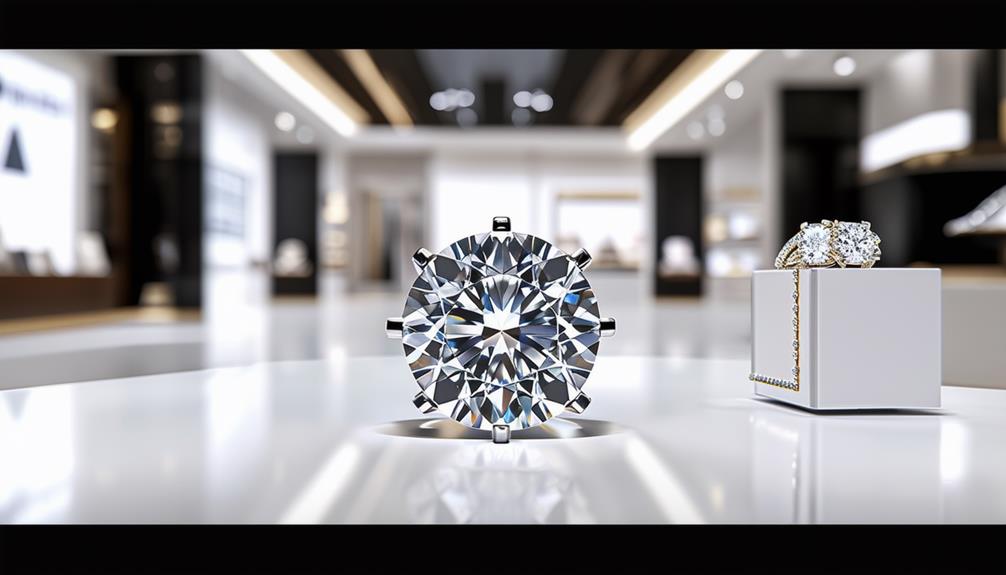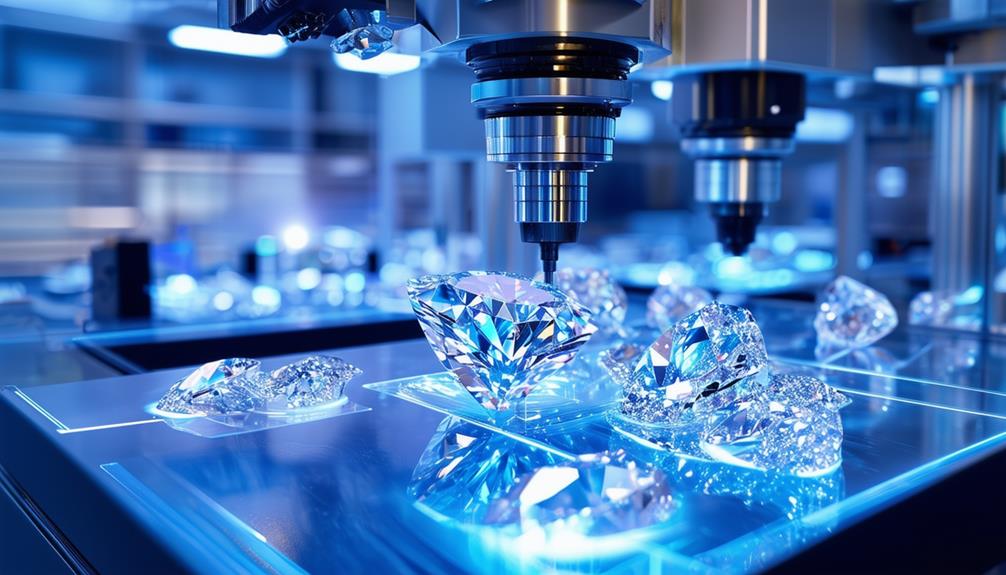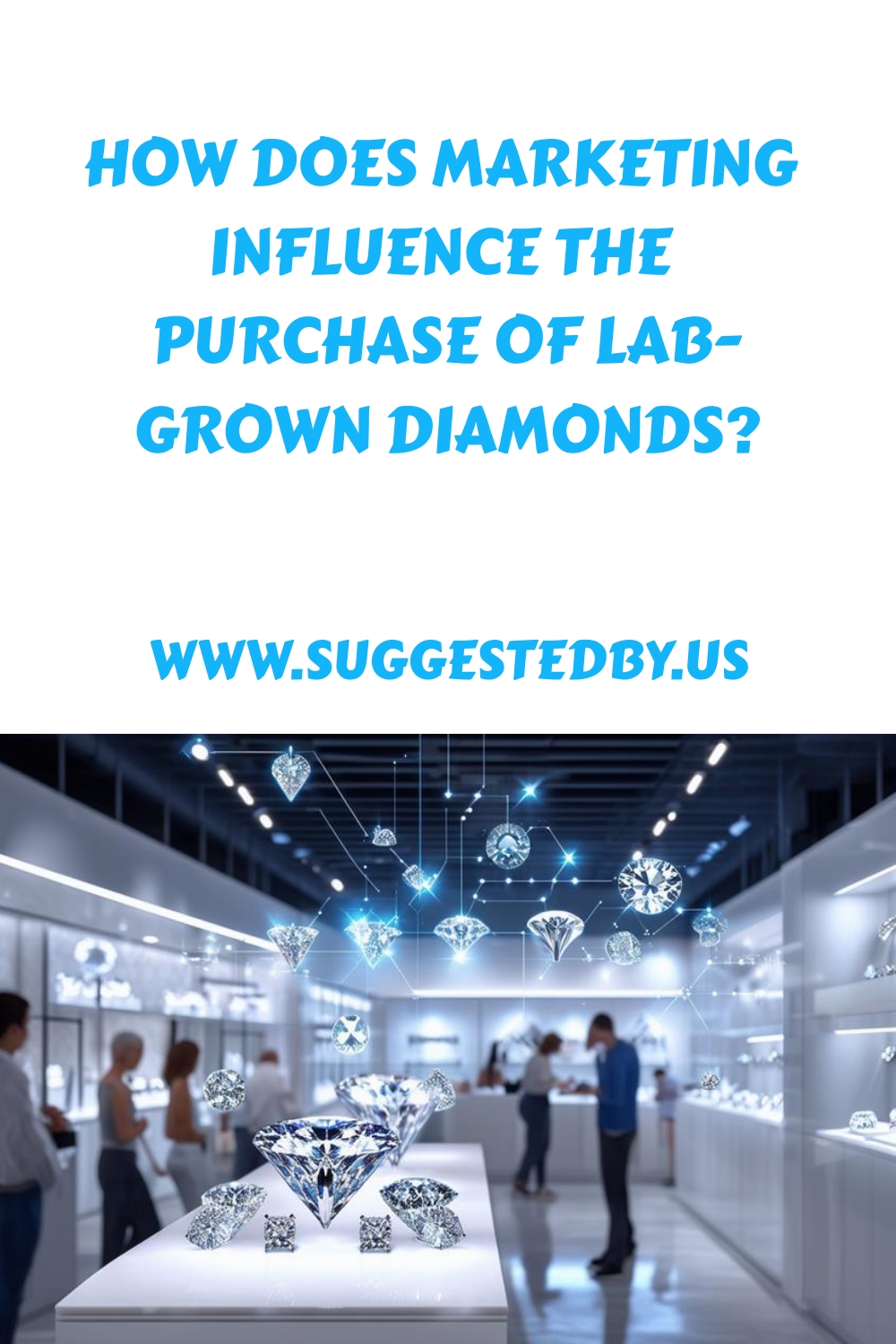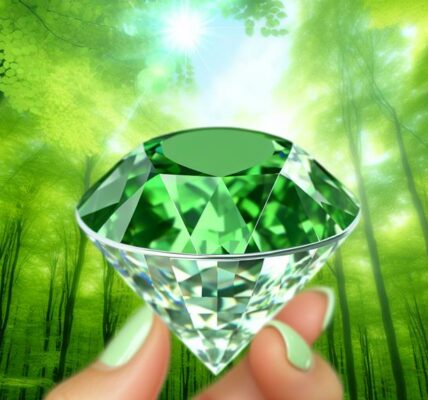How Does Marketing Influence the Purchase of Lab-Grown Diamonds?
Marketing significantly impacts the purchase of lab-grown diamonds by educating consumers about their ethical sourcing and reduced environmental impact.
Strategic use of social media influencers effectively reaches targeted audiences, highlighting the affordability and environmental benefits compared to natural diamonds.
Branding initiatives focus on transparency, sustainability, and innovative designs, building trust and setting these products apart in a competitive market.
Furthermore, marketing campaigns showcase the superior quality and customization options of lab-grown diamonds, appealing to both budget-conscious and eco-conscious consumers.
Understanding these strategies demonstrates how marketing drives consumer interest and enhances market acceptance.
Article Contents
- 1 Introduction
- 2 Key Marketing Strategies for Lab-Grown Diamonds
- 3 Consumer Perceptions and Values
- 4 The Role of Branding
- 5 Technological Advancements and Product Innovations
- 6 Challenges and Consumer Backlashes
- 7 Our Conclusions and Final Thoughts
- 8 Frequently Asked Questions
- 9 More Reading About Lab Diamonds and Consumer Preferences
Introduction
Lab-grown diamonds, celebrated for their ethical sourcing and innovative designs, are gaining traction in the jewellery industry. Effective marketing is crucial in this trend, shaping consumer perceptions and driving demand through strategic messaging.
This article examines how marketing enhances the appeal and acceptance of lab-grown diamonds.
An Overview of Lab-Grown Diamonds
Lab-grown diamonds, created using advanced technology in controlled environments, replicate the natural diamond growth process, offering identical physical, chemical, and optical properties. These synthetic gems are produced through methods like High Pressure High Temperature (HPHT) or Chemical Vapor Deposition (CVD), ensuring the same brilliance and durability as natural diamonds.
Several compelling factors drive the popularity of lab-grown diamonds. Ethical sourcing is a significant advantage, as these diamonds are produced without the environmental and human rights issues often linked to traditional mining. Their production process is also more environmentally sustainable, significantly reducing the carbon footprint.
Another key benefit is affordability. Lab-grown diamonds generally cost 20–40% less than natural diamonds, making them an appealing option for budget-conscious consumers without compromising on quality. This cost-effectiveness allows for larger, more elaborate designs that might otherwise be financially out of reach.
The market for lab-grown diamonds is expanding quickly, capturing a growing share of the overall diamond industry. This growth is fuelled by a value proposition that combines ethical considerations, sustainability, and financial accessibility, appealing to a broad range of consumers seeking responsible and cost-effective choices.
The Importance of Marketing in the Jewellery Industry
In the highly competitive jewellery industry, effective marketing strategies are essential for educating consumers and differentiating products in a crowded market. Marketing is indispensable, guiding consumers through their purchasing decisions by highlighting unique attributes and advantages.
Marketing efforts are particularly vital for lab-grown diamonds. They inform potential buyers about their ethical and sustainable benefits, such as reduced environmental impact and transparent supply chains, which appeal to socially conscious consumers.
Marketing campaigns also emphasise the affordability of lab-grown diamonds, making them an attractive option for budget-conscious buyers without compromising quality. By showcasing the versatility and customisation options available, these initiatives highlight innovative designs and technological advancements in lab-grown diamond jewellery, capturing the interest of consumers seeking unique and personalised pieces.
Major jewellery retailers play a crucial role in these efforts, utilising creative marketing strategies to normalise lab-grown diamonds and gradually shift consumer perceptions. Through concerted marketing campaigns, lab-grown diamonds are increasingly seen as a desirable and viable alternative to natural diamonds, ultimately influencing purchasing behaviours and driving market growth.
What We Will Cover in This Article
Understanding the pivotal role of marketing in shaping consumer perceptions and driving the demand for lab-grown diamonds is essential for understanding their growing market presence. This article explores how marketing strategies effectively highlight the distinct benefits of lab-grown diamonds. By examining how brands communicate sustainability and ethical sourcing, it becomes evident why these diamonds appeal to eco-conscious consumers. Additionally, the discussion covers how the emphasis on affordability and the value proposition of lab-grown diamonds attract budget-minded buyers.
We will examine the marketing techniques used to educate consumers about the technology behind lab-grown diamonds and their identical properties to natural diamonds. Marketing campaigns significantly influence purchasing decisions by positioning lab-grown diamonds as a modern, ethical, and desirable choice.
This article examines marketing efforts’ multifaceted approach, including how they foster awareness and shape consumer preferences, ultimately driving market demand for lab-grown diamonds. Through this analysis, readers will gain valuable insights into the intersection of marketing and consumer behaviour within the diamond industry’s evolving landscape.
Key Marketing Strategies for Lab-Grown Diamonds
One of the primary marketing strategies for lab-grown diamonds is to educate consumers about their unique benefits and differences from natural diamonds. Utilising social media influencers can effectively reach and engage target audiences, building trust and interest.
Additionally, tailoring marketing efforts to specific demographics and psychographics ensures messages resonate with individuals who value sustainability, affordability, and innovative designs.
Informing Consumers About the Benefits and Differences of Lab-Grown Diamonds
Educating consumers about the benefits and distinctions of lab-grown diamonds is essential for making informed purchasing decisions and gaining market acceptance. Lab-grown diamonds, which are chemically identical to mined diamonds, offer unique advantages that resonate with contemporary values. Key benefits include environmental sustainability, cost-effectiveness, and innovative design possibilities. These aspects align with eco-conscious values, offering a luxurious yet affordable alternative to natural diamonds.
A clear marketing message is crucial to communicating these benefits effectively. Lab-grown diamonds are positioned as an ethical choice by emphasising the reduced environmental impact attributed to the absence of mining. Additionally, their affordability makes them available to a wider audience without sacrificing the intrinsic value that the Federal Trade Commission (FTC) has recognized.
Here’s a comparison to highlight the key points:
| Feature | Lab-Grown Diamonds | Natural Diamonds |
|---|---|---|
| Chemical Composition | Identical to natural diamonds | Carbon (C) |
| Environmental Impact | Low (no mining required) | High (extensive mining required) |
| Cost | Generally lower | Higher due to mining and scarcity |
| Value | Recognised as equally valuable by FTC | Traditionally valued |
| Design Flexibility | High (innovative designs possible) | Limited by natural formation |
This clear presentation of facts empowers consumers to make informed decisions, promoting acceptance and growth in the lab-grown diamond market.
Using Social Media Influencers to Reach Target Audiences
Leveraging social media influencers has become an effective strategy for reaching target audiences and driving the popularity of lab-grown diamonds. By harnessing the power of social media, brands can connect with a broader audience, particularly Millennials, 70% of whom consider purchasing lab-grown diamonds. Influencers play a crucial role in this by highlighting the affordability and ethical benefits of these gems, which strongly resonate with younger, price-conscious buyers.
Utilising influencers allows brands to showcase the unique selling points of lab-grown diamonds, such as their sustainability and innovative designs. Through authentic and engaging content, influencers can effectively communicate the reduced environmental impact and transparent supply chains of these diamonds, appealing to consumers who prioritise ethical considerations in their purchases.
The partnership between brands and influencers has significantly contributed to the rapid growth of lab-grown diamond sales, especially in the bridal category. Social media platforms serve as a direct channel for brands to promote their products, establishing credibility and trust among potential buyers.
Focusing on Specific Demographics and Psychographics
Targeting specific demographics and psychographics, particularly Millennials and Gen Z, has become a cornerstone of effective marketing strategies for lab-grown diamonds. These younger generations prioritise sustainability and ethical sourcing, making them ideal candidates for lab-grown diamond campaigns. Marketers can tap into the growing trend of conscious consumerism by emphasising the reduced environmental impact and transparent supply chains of lab-grown diamonds.
Affordability is another significant factor. Millennials and Gen Z often face financial constraints, making the cost-effective nature of lab-grown diamonds appealing. Marketing campaigns highlight the opportunity to purchase larger, more dazzling stones at a fraction of the cost of natural diamonds. This financial accessibility opens the door for luxury within reach, resonating with an audience that values both quality and savings.
Moreover, personalisation and innovative designs are important in attracting these demographics. Lab-grown diamonds offer unique customisation options, allowing consumers to create bespoke jewellery pieces that reflect their individuality. Utilising digital marketing tools and social media platforms, brands can effectively communicate these benefits, reaching a tech-savvy and socially engaged audience eager for freedom and self-expression through their purchasing choices.
Consumer Perceptions and Values

Consumer perceptions and values significantly influence the adoption of lab-grown diamonds, primarily due to environmental and ethical considerations. Their cost-effectiveness makes them appealing to budget-conscious consumers.
Furthermore, addressing concerns about lab-grown diamonds’ quality and aesthetic likeness is crucial for establishing credibility and trust in the market.
How Environmental and Ethical Concerns Drive Consumer Choices
Increasing awareness of environmental and ethical issues is driving consumers to choose lab-grown diamonds as a more sustainable and responsible alternative. Several important factors that are in line with modern priorities and values support this shift.
- Eco-friendly and Zero Emissions: Lab-grown diamonds are produced in controlled settings, significantly reducing environmental impact compared to traditional mining, which often involves extensive land disruption and high carbon emissions.
- Ethically Sourced and Traceable: The transparent supply chains of lab-grown diamonds ensure these gems are free from human rights abuses and conflict associations commonly linked with mined diamonds. Consumers can trace the origin of their diamonds, reinforcing their ethical standards.
- High Quality and Customisation: Lab-grown diamonds possess the same physical and chemical properties as natural diamonds, with the added benefit of customisation. This appeals to consumers seeking unique, high-quality pieces that align with their ethical values.
- Symbol of Values: For many, purchasing a lab-grown diamond goes beyond aesthetics, serving as a reflection of their commitment to sustainable practices and ethical consumption. This choice allows consumers to express their values through their purchases.
The Appeal of Lab-Grown Diamonds as a More Affordable Alternative
Building on their ethical and environmental benefits, lab-grown diamonds also stand out for their affordability, significantly enhancing their appeal to consumers, particularly Millennials and Gen Z. These younger generations often prioritise budget-friendly options and appreciate the chance to purchase high-quality diamonds at a fraction of the cost of natural ones. Lab-grown diamonds are typically 20–40% less expensive, offering a compelling alternative without sacrificing perceived luxury or quality.
The financial advantage of lab-grown diamonds enables consumers to afford larger or higher-quality stones within their budget. This value proposition is a key factor driving the increasing market demand. Marketing strategies highlight this affordability, positioning lab-grown diamonds as a cost-effective yet premium choice, which appeals to price-sensitive buyers.
Below is a table comparing key aspects of lab-grown and natural diamonds:
| Attribute | Lab-Grown Diamonds | Natural Diamonds |
|---|---|---|
| Cost | 20-40% cheaper | Higher price |
| Target Audience | Millennials, Gen Z | Broad demographic |
| Value Proposition | More diamond for the money | Traditional luxury appeal |
This affordability and ethical and environmental benefits make lab-grown diamonds an increasingly popular choice among consumers seeking value and conscientious purchasing options.
Addressing Consumer Concerns About the Quality and Appearance of Lab-Grown Diamonds
To address concerns about the quality and appearance of lab-grown diamonds, educating consumers on the technological advancements and stringent certification processes that ensure these stones are virtually indistinguishable from their natural counterparts is crucial. This education is essential for dispelling myths and fostering confidence among potential buyers.
Technological Advancements: Techniques such as Chemical Vapor Deposition (CVD) and High Pressure High Temperature (HPHT) have significantly improved the quality of lab-grown diamonds, making their appearance and physical properties comparable to natural diamonds.
Certification Processes: Leading gemological labs, including the Gemological Institute of America (GIA), now certify lab-grown diamonds. This certification process involves rigorous evaluation, validating the quality and authenticity of each stone.
Consumer Education: Marketing campaigns highlight the similarities in cut, clarity, colour, and carat weight between lab-grown and natural diamonds. Educating consumers about these factors helps build trust and acceptance.
Design Flexibility: The availability and affordability of lab-grown diamonds enable innovative and unique designs. Consumers can enjoy personalised pieces that might be cost-prohibitive with natural diamonds, offering freedom in artistic expression and customisation.
The Role of Branding

Branding is crucial in establishing the market presence of lab-grown diamonds by building trust and loyalty among consumers.
Effective branding strategies often involve compelling narratives that emphasise lab-grown diamonds’ ethical and environmental advantages, appealing to value-conscious customers.
Furthermore, a strong brand can differentiate products in a competitive market, significantly influencing consumer purchasing decisions.
Strategies for Establishing a Strong Brand Presence in the Market
Establishing a strong brand presence in the lab-grown diamond market requires a meticulous focus on ethical sourcing, sustainability, and transparency to appeal to eco-conscious consumers. By emphasising these core values, brands can create a unique identity that resonates with modern buyers who prioritise environmental and social responsibility.
To effectively establish and maintain a robust brand presence, companies should consider the following strategies:
- Highlight Ethical Sourcing: Clearly communicate the ethical practices involved in producing lab-grown diamonds, including the origins of raw materials and labour conditions in manufacturing.
- Emphasise Sustainability: Showcase the environmental benefits of lab-grown diamonds compared to mined diamonds, such as reduced carbon footprint and minimal ecological disruption.
- Ensure Transparency: Maintain open lines of communication regarding the production process and supply chain. Transparency builds consumer trust and strengthens brand loyalty.
- Create Engaging Marketing Campaigns: Utilise compelling storytelling and visually appealing content to capture the attention of potential buyers. Highlighting innovative designs and technological advancements can set the brand apart from competitors.
How Branding Influences Consumer Trust and Loyalty
To establish a strong and trustworthy presence in the market, it is crucial to understand how consistent branding that emphasises transparency, sustainability, and quality influences consumer trust and loyalty. Effective branding strategies are vital in differentiating lab-grown diamond companies in a competitive market, shaping consumer perceptions, and driving sales. By communicating values, mission, and commitment to ethical practices, brands can attract and retain customers who prioritise these aspects.
| Branding Element | Impact on Consumer Trust and Loyalty |
|---|---|
| Transparency | Builds trust through open communication |
| Sustainability | Appeals to eco-conscious consumers |
| Quality | Ensures confidence in product durability |
| Ethical Practices | Attracts ethically-minded customers |
| Unique Benefits | Differentiates brand and enhances loyalty |
Consistent messaging highlighting the unique benefits of lab-grown diamonds, such as affordability and reduced environmental impact, reinforces the brand’s commitment to quality and ethical standards. This approach enhances the brand’s reputation and fosters long-term loyalty among consumers.
Moreover, transparency in supply chains and business practices builds a positive reputation, encouraging consumers to feel confident in their purchasing decisions. Ultimately, a strong brand presence prioritising these core elements can significantly influence consumer trust and loyalty, making branding a pivotal aspect in marketing lab-grown diamonds.
Crafting Engaging Stories That Resonate With Consumers
Crafting compelling brand stories highlighting lab-grown diamonds’ journey and ethical impact can significantly resonate with consumers, fostering a deeper emotional connection and loyalty. By focusing on the unique attributes of lab-grown diamonds, brands can create narratives that align with the values and aspirations of modern consumers, who prioritise freedom of choice and ethical consumption.
Effective storytelling within this sphere often includes:
- Highlighting Sustainability: Emphasising the reduced environmental impact of lab-grown diamonds compared to mined ones appeals to eco-conscious consumers. Providing detailed information on how these diamonds are more sustainable can enhance the credibility of the brand’s claims.
- Promoting Ethical Sourcing: Addressing the ethical concerns associated with diamond mining, such as conflict diamonds, positions lab-grown diamonds as the responsible choice. Brands can share stories about their transparent supply chains and the positive social impact of their products.
- Showcasing Innovation: Lab-grown diamonds are created using advanced technologies like HPHT (High-Pressure High-Temperature) and CVD (Chemical Vapor Deposition). Engagingly explaining these processes can highlight the innovation behind the products, appealing to tech-savvy consumers.
- Affordability and Value: Positioning lab-grown diamonds as a cost-effective alternative to natural diamonds without compromising on quality can attract budget-conscious buyers. Brands can share testimonials and comparisons to reinforce this message.
Technological Advancements and Product Innovations

Technological advancements have significantly improved the quality and variety of lab-grown diamonds, making them nearly indistinguishable from natural ones. By highlighting the benefits of these advancements, such as superior cutting techniques and innovative growth processes, brands can educate consumers on the enhanced attributes of lab-grown diamonds.
These innovations not only elevate consumer perceptions but also influence purchasing decisions by emphasizing the modernity and precision of lab-grown options.
How Technological Advancements Enhance the Quality and Variety of Lab-Grown Diamonds
Advancements in production techniques, such as Chemical Vapour Deposition (CVD) and High Pressure High Temperature (HPHT), have significantly enhanced the quality and variety of lab-grown diamonds. These technological breakthroughs have led to lab-grown diamonds that are virtually indistinguishable from natural ones. Improved precision in these methods has expanded the range of options in terms of colour, clarity, and carat weight, catering to diverse consumer preferences.
Here are four key ways technological advancements have enhanced lab-grown diamonds:
- Superior Quality: The refinement of CVD and HPHT processes ensures that lab-grown diamonds exhibit high quality, often comparable to natural diamonds, making them an appealing choice for discerning buyers.
- Design Versatility: Technological innovations have enabled the creation of unique and intricate designs that are challenging to achieve with natural diamonds, attracting consumers seeking customisable and distinctive jewellery.
- Certification and Trust: Leading gemological laboratories like GIA now certify lab-grown diamonds, providing assurance of their quality and authenticity, thereby increasing consumer confidence.
- Cost Efficiency: Advanced manufacturing techniques have streamlined production, reducing costs. This allows consumers to purchase high-quality diamonds at more competitive prices, making them more accessible.
These advancements have significantly expanded the appeal and marketability of lab-grown diamonds.
Communicating the Benefits of New Technologies to Consumers
Effective marketing strategies are essential for conveying the benefits of advanced technologies in lab-grown diamond production to consumers. Brands emphasise the technological innovations that allow lab-grown diamonds to match natural ones in quality and consistency. By educating potential buyers about sophisticated processes like Chemical Vapour Deposition (CVD) and High Pressure High Temperature (HPHT), marketing efforts demystify the production process, highlighting that lab-grown diamonds possess identical properties to natural diamonds.
Additionally, marketing campaigns highlight the unique advantages of lab-grown diamonds, such as customisation options and designs not easily achievable with mined diamonds. This appeals to consumers who value uniqueness and personalisation. The emphasis on technological superiority also includes showcasing the ethical and environmental benefits, attracting eco-conscious consumers who appreciate reduced environmental impact and transparent supply chains.
How Innovations Shape Consumer Views on Lab-Grown Diamonds
Innovations in lab-grown diamond production are reshaping consumer perceptions by significantly improving quality and expanding design possibilities. Technological advancements such as Chemical Vapour Deposition (CVD) and High-Pressure High-Temperature (HPHT) methods have enhanced the quality of lab-grown diamonds, making them virtually indistinguishable from natural diamonds. These advancements also allow for greater creativity and customisation in jewellery design, appealing to consumers who value individuality and choice.
Additionally, product innovations have made it possible to produce larger diamonds, catering to consumer preferences for impressive, statement-making pieces. The ability to tailor specific attributes such as colour, size, and clarity further personalises the consumer experience.
Here are four key innovations shaping consumer views on lab-grown diamonds:
- Enhanced Quality: Advanced production techniques ensure lab-grown diamonds meet high standards of clarity and brilliance.
- Creative Designs: Flexible crafting options enable the creation of unique, diverse jewellery pieces appealing to fashion-conscious consumers.
- Customisation: The option to specify exact attributes fosters a sense of ownership and uniqueness.
- Larger Stones: Technological advancements facilitate the growth of bigger diamonds, satisfying the demand for grandeur.
These innovations collectively enhance the appeal and acceptance of lab-grown diamonds in the market. The introduction of superdeep diamonds appeal to consumers who are interested in the environmental and ethical implications of diamond mining. Additionally, the ability to create unique and customized lab-grown diamonds through advanced technology adds to their allure. Collectively, these developments are driving the growing acceptance and demand for lab-grown diamonds in the jewelry industry.
Challenges and Consumer Backlashes

As cultivated diamonds gain popularity, the market becomes increasingly competitive, making it challenging for brands to differentiate themselves.
Addressing concerns about the lower resale value of cultivated diamonds is crucial, requiring effective strategies to build consumer trust.
Overcoming scepticism regarding the quality and authenticity of these diamonds is essential for sustained market growth and acceptance.
Addressing the Issue of an Increasingly Crowded Market
Companies must differentiate their products in the increasingly competitive lab-grown diamond market to avoid consumer fatigue and market saturation. As the market expands, it becomes crucial for businesses to highlight their unique selling points to attract and retain customers.
To address these challenges effectively, companies can adopt several strategic approaches, including:
- Emphasise Unique Selling Points:
Focus on innovative designs, advanced technology, and distinctive product features to stand out.
- Personalised Experiences:
Offer customised services and products to create stronger emotional connections with consumers, fostering brand loyalty.
- Authenticity and Transparency:
Build trust through transparent practices and genuine messaging about the benefits and origins of lab-grown diamonds.
- Sustainability Messaging:
Highlight lab-grown diamonds’ environmental and ethical advantages to appeal to eco-conscious consumers.
Strategies to Mitigate Concerns About the Lower Resale Value of Lab-Grown Diamonds
Many consumers express concerns about the lower resale value of lab-grown diamonds. Several targeted strategies can be employed to address these concerns effectively.
Firstly, educating buyers on the unique value proposition of lab-grown diamonds is crucial. Emphasise their ethical and sustainable characteristics, highlighting the transparent production process and substantial environmental benefits. This educational approach can help counteract negative perceptions and consumer hesitations.
Secondly, shifting the narrative towards lab-grown diamonds’ emotional and symbolic value can be impactful. Market these diamonds as meaningful gifts in relationships and family heirlooms, thus shifting the focus away from resale value to personal and sentimental worth.
Cost transparency is also essential. Emphasise the lower initial cost of lab-grown diamonds, positioning them as affordable and accessible options for those prioritising value over potential resale profits.
Overcoming Doubts and Building Consumer Confidence
Addressing both perceived challenges and actual market backlashes is essential to overcome doubts and build consumer confidence in lab-grown diamonds. Effective marketing should focus on educating consumers about the benefits and dispelling misconceptions.
Key areas to address include:
Transparency and Certification: Clear, accredited certifications guarantee authenticity and quality, fostering trust. Inform consumers about different certification types and their impact on valuation.
Environmental Impact: To reassure environmentally conscious buyers, highlight efforts to reduce the carbon footprint and mitigate the use of harmful chemicals. Transparent communication about energy usage and lifecycle sustainability is essential.
Quality Assurance: To alleviate concerns about durability and long-term value, emphasize rigorous quality control processes and technological advancements in lab-grown diamond production.
Market Positioning and Resale Value: Acknowledge resale value challenges and pivot marketing towards the unique benefits of lab-grown diamonds, such as affordability and innovative designs, that appeal to modern consumers.
Our Conclusions and Final Thoughts

To summarise, successful marketing strategies have highlighted the sustainability, affordability, and innovative charm of lab-grown diamonds, resulting in a growing consumer acceptance and demand.
By addressing environmental and ethical issues, brands have effectively positioned lab-grown diamonds as attractive to natural stones.
Looking forward, we predict ongoing growth in this market sector as consumers become more knowledgeable and value the distinct advantages that lab-grown diamonds provide.
A Recap of How Marketing Strategies Influence the Purchase of Lab-Grown Diamonds
Effective marketing strategies have significantly influenced consumer behaviour and purchasing decisions regarding lab-grown diamonds. These strategies have successfully highlighted the unique advantages of lab-grown diamonds, appealing to a wide range of consumers.
Below is a summary of how marketing has played a crucial role:
- Highlighting Ethical and Sustainable Aspects: Marketing efforts emphasise the environmental benefits and ethical considerations of lab-grown diamonds. This appeals to consumers who prioritise sustainability and transparency in their purchasing decisions.
- Competitive Pricing: By focusing on affordability, marketing campaigns attract budget-conscious buyers. Lab-grown diamonds offer similar aesthetics and quality as natural diamonds but at a more accessible price point, making them an appealing option for value-seeking consumers.
- Emotional Messaging: Marketing strategies often incorporate emotional narratives that highlight the symbolism and sentimental value of lab-grown diamonds. This approach resonates with consumers on a personal level, influencing their desire to make a purchase.
- Transparency and Education: Effective marketing includes educating consumers about the creation process of lab-grown diamonds, building trust and confidence. Transparency in marketing materials helps clarify the product and assures consumers of its authenticity.
Predictions for the Future of Lab-Grown Diamonds in the Market
Given sustained growth, technological advancements, and shifting consumer preferences, the market for lab-grown diamonds appears to have a very bright future. Demand for these diamonds is anticipated to continue upward, with double-digit annual growth expected over the next decade. This surge is largely due to the competitive pricing of lab-grown diamonds, which are up to 75% less expensive than their natural counterparts, making them particularly attractive to cost-conscious consumers.
Major jewellery retailers and luxury brands increasingly incorporate lab-grown diamonds into their collections, recognising their appeal to eco-conscious consumers prioritising sustainability and innovation. These brands emphasise the environmental benefits and transparent supply chains associated with lab-grown diamonds, aligning with the values of a more environmentally aware generation.
Technological advancements are also crucial. Innovations in lab-grown diamond technology are enabling unique designs and product differentiation, enhancing their market appeal. This increases their attractiveness and opens new avenues for creativity within the jewellery industry.
While the luxury industry cautiously embraces lab-grown diamonds, it faces both opportunities and challenges. Nevertheless, the overall outlook is positive, with lab-grown diamonds expected to carve out a significant niche in the market.
Frequently Asked Questions
How are lab-grown diamonds impacting the diamond industry and market?
Lab-grown diamonds are having a significant impact on the diamond industry and market by providing more cost-effective and eco-friendly alternatives. They now make up 10% of global diamond jewellery sales, with leading retailers and luxury brands including them in their collections for both economic and design benefits.
This trend is prompting the traditional diamond industry to adjust to changing consumer preferences, placing greater emphasis on sustainability and transparency. As a result, this shift is disrupting established market dynamics and creating a more competitive landscape.
What Is the Market for Lab-Grown Diamonds?
Rising consumer interest and significant advancements in production technology are driving the market for lab-grown diamonds to grow quickly.
As of 2021, lab-grown diamonds accounted for 10% of global diamond jewellery sales, with forecasts indicating double-digit growth annually over the next decade.
Major retailers like Pandora and Signet are actively promoting these diamonds, challenging the traditional dominance of natural diamonds and appealing to eco-conscious and price-sensitive consumers.
Why Are People Buying Lab-Grown Diamonds?
People are buying cultivated diamonds for several convincing reasons. They are considerably more cost-effective, often priced up to 75% less than natural diamonds.
Their reduced environmental impact and transparent supply chains are appealing to environmentally conscious consumers, particularly Millennials and Gen Z.
Moreover, technological advancements and innovative designs make cultivated diamonds an appealing and socially responsible option, in line with the values of those looking to break away from traditional diamond industry limitations.
What is the demand for lab-grown diamonds?
A growing consumer interest in eco-friendly and affordable alternatives is driving up the demand for lab-grown diamonds.
In 2021, lab-grown diamonds made up 10% of global diamond jewellery sales, reflecting their rising acceptance. Major jewellery retailers and the eco-conscious attitudes of Millennials and Gen Z are supporting the trend.
With prices up to 75% lower than natural diamonds, the market for lab-grown diamonds is projected to expand significantly over the next decade.
More Reading About Lab Diamonds and Consumer Preferences
1: How Lab-Grown Diamonds are Changing The Way We Shop For Jewellery
2: 14 Factors That Influence Consumer Preferences for Lab-grown or Natural Diamonds
3: The Future of Lab-Grown Diamond Marketing
4: Why Lab-Grown Diamond Sales are Surging
5: How Lab-Grown Diamonds Went Mainstream







2 COMMENTS